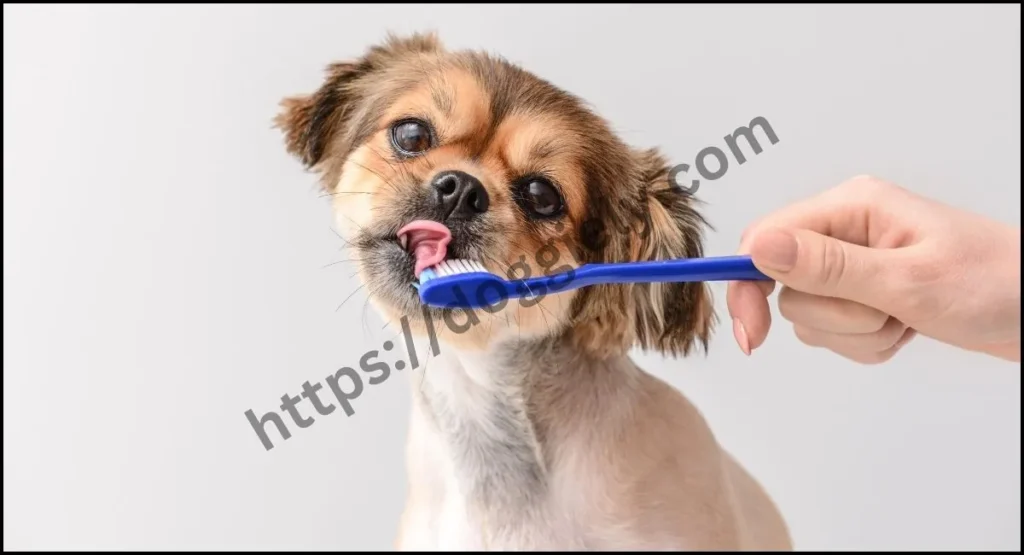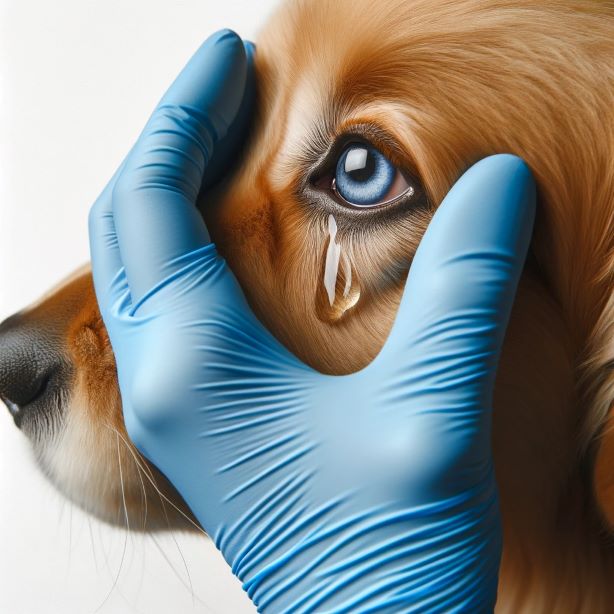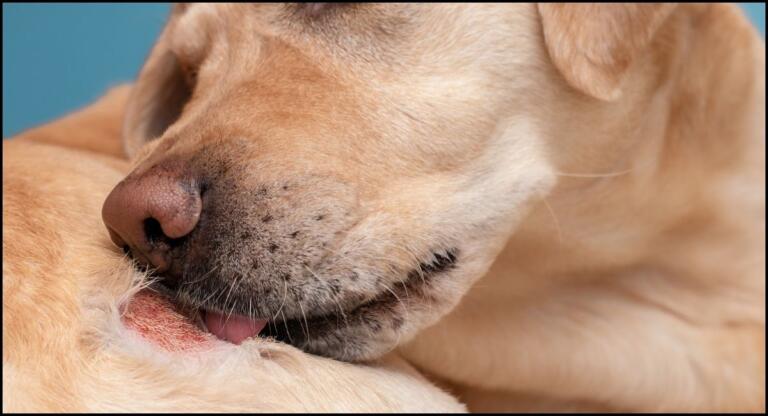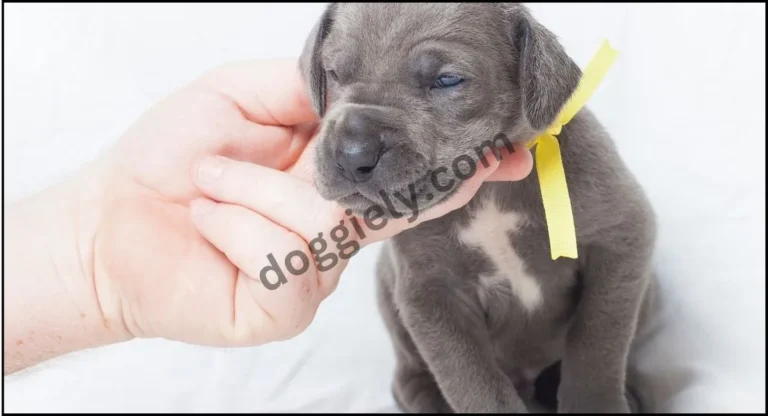How often to brush dog teeth? Best Advice

How often to brush dog teeth? To know it read the full article.
To maintain your dog’s dental well-being, try to brush their teeth 2-3 times weekly. This regular brushing routine is effective in preventing dental problems and promoting the health of your pet’s teeth and gums.
Maintaining regular dental hygiene for dogs is crucial for their overall health and well-being. Just like humans, dogs can suffer from various dental issues, including plaque buildup, tartar, gum disease, and even tooth loss. These dental problems can lead to more serious health complications if left untreated. This article explains how often to brush dog teeth.
The Importance of Regular Dental Hygiene
Here are key reasons why regular dental hygiene is essential for dogs:
- Prevention of Oral Diseases: Regular brushing and dental care can prevent the buildup of plaque and tartar, which are the primary causes of periodontal disease in dogs. This disease can lead to painful infections and tooth loss.
- Early Detection of Dental Issues: Regular dental check-ups can help in the early detection of issues such as broken teeth, malocclusion, or tumors in the mouth. Early treatment of these conditions can prevent more serious health problems.
- Avoiding Bad Breath: Accumulation of bacteria in a dog’s mouth can cause bad breath. Regular dental care helps in controlling the bacteria, thus keeping your dog’s breath fresher.
- Preventing Organ Damage: Bacteria from the mouth can enter the bloodstream and affect vital organs like the heart, liver, and kidneys. By keeping your dog’s mouth clean, you can reduce the risk of such bacteria spreading and causing harm.
- Improved Quality of Life: Dental pain can significantly affect a dog’s quality of life. They may experience difficulty eating or display changes in behavior. Maintaining good dental health ensures your dog remains happy and pain-free.
- Cost-Effective: Preventive dental care is more cost-effective than treating advanced dental diseases, which can be expensive and require specialized treatments or surgeries.
- Stronger Teeth and Gums: Regular dental care strengthens your dog’s teeth and gums, ensuring they maintain a healthy bite and can enjoy their food without discomfort.
- Bonding Opportunity: Brushing your dog’s teeth can be a bonding experience, enhancing the relationship between you and your pet.
How often to brush dog teeth?
Guidelines for Frequency of Dog Teeth Brushing
Establishing a regular routine for brushing your dog’s teeth is critical for their dental and overall health. The frequency of teeth brushing can vary depending on several factors, including your dog’s age, breed, and overall dental health. Here are some general guidelines:
- Daily Brushing: Ideally, you should brush your dog’s teeth every day. Just like in humans, plaque can build up quickly on dog teeth and turn into tartar within 24-36 hours. Daily brushing prevents this buildup and maintains oral health.
- Minimum Frequency: If daily brushing is not possible, aim for at least three to four times a week. This frequency can still significantly reduce the risk of dental diseases and keep your dog’s mouth healthy.
- Puppy Introduction: Start introducing dental care early in your dog’s life. Puppies can get used to the routine more easily, making it less stressful as they grow. However, be gentle and patient, as their mouths can be sensitive.
- Adjust Based on Dental Health: Dogs with a history of dental issues or certain breeds prone to dental problems might require more frequent brushing. Follow your veterinarian’s advice if your dog falls into these categories.
- Combine with Other Dental Care Methods: For dogs that resist brushing or in between brushings, use dental chews, toys, and diets specifically designed to reduce plaque and tartar buildup.
- Regular Veterinary Check-ups: Even with regular brushing, it’s important to have your dog’s teeth checked by a veterinarian at least once a year. They can provide professional cleanings and address any issues that might not be visible or apparent to you.
- Be Consistent: Whatever frequency you choose, consistency is key. Try to brush at the same time each day or on specific days of the week to establish a routine.
- Monitor for Dental Issues: Keep an eye out for signs of dental problems, such as bad breath, bleeding gums, or changes in eating habits, and consult your vet if you notice any concerning symptoms.
- Training and Positive Reinforcement: Use positive reinforcement to make teeth brushing a more enjoyable experience for your dog. Treats and praise can help create positive associations with brushing.
- Use Appropriate Tools: Always use a toothbrush and toothpaste designed for dogs. Human toothpaste can be harmful to them, and dog-specific brushes are designed to be more effective and comfortable for their mouths.
Regular teeth brushing is a key component of a comprehensive dental care routine for dogs. By adhering to these guidelines and consulting with your veterinarian for personalized advice, you can help ensure your dog maintains good oral hygiene and overall health.
Signs Your Dog Needs More Frequent Teeth Brushing

Recognizing the signs that your dog may need more frequent teeth brushing is crucial for maintaining their oral and overall health. While regular dental check-ups by a veterinarian are essential, being aware of these signs can help you take proactive steps in your dog’s dental care routine. Here are some key indicators:
- Bad Breath: While it’s normal for dogs to have not-so-fresh breath, excessively foul breath is often a sign of bacterial buildup in the mouth, indicating the need for better dental care.
- Visible Plaque and Tartar: If you notice a yellow or brown buildup on your dog’s teeth, especially near the gum line, this is plaque and tartar. Once tartar forms, it can only be removed by a professional cleaning, but more frequent brushing can prevent its buildup.
- Red, Swollen, or Bleeding Gums: These are signs of gingivitis, a form of gum disease. If your dog’s gums are not a healthy pink color, it’s time to increase dental care.
- Loose or Missing Teeth: This can be a sign of advanced dental disease. Increased brushing can help prevent further tooth loss, but a vet check-up is crucial in such cases.
- Difficulty Eating or Changes in Eating Habits: If your dog seems hesitant to eat, chews only on one side of their mouth, or has lost their appetite, it could be due to dental pain.
- Pawing at the Mouth or Face Rubbing: If your dog frequently paws at their mouth or rubs their face against surfaces, it might be an attempt to alleviate dental discomfort.
- Drooling More Than Usual: Excessive drooling, especially if the drool is tinged with blood, can indicate dental issues.
- Changes in Behavior: A dog in pain may become more irritable or less active. If your dog is showing changes in behavior, consider whether dental issues could be a cause.
- Tooth Discoloration: If you notice any discoloration or spots on your dog’s teeth, it could be a sign of decay or other dental issues.
- Reduced Interest in Chew Toys: If your dog suddenly loses interest in their favorite chew toys, it could be due to mouth pain.
If you notice any of these signs, it’s important to consult your veterinarian to rule out serious dental conditions and to get professional advice on your dog’s dental care routine. While more frequent brushing can help address many of these issues, professional dental cleaning and treatment might be necessary in some cases. Early intervention is key to preventing more serious health problems and maintaining your dog’s overall well-being.
Alternatives to Brushing
Maintaining your dog’s dental health is essential, but sometimes brushing their teeth can be challenging. Fortunately, there are several alternatives to brushing that can help keep your dog’s teeth clean and healthy. These alternatives can be particularly useful for dogs that resist brushing or as a supplement to regular brushing. Here are some effective options:
- Dental Chews and Treats: There are many types of dental chews and treats designed to help reduce plaque and tartar buildup. These products are formulated to clean teeth as the dog chews, and they can also help freshen breath. It’s important to choose chews that are appropriate for your dog’s size and dietary needs.
- Dental Diets and Foods: Some pet food brands offer dental diets specifically formulated to promote oral health. These foods are typically designed with a texture that helps scrub the teeth as the dog chews. Always consult with your veterinarian before switching your dog’s diet.
- Water Additives: Dental water additives are designed to be added to your dog’s drinking water. They contain ingredients that help reduce plaque, tartar, and bacteria, and can also help freshen breath.
- Dental Wipes: Dental wipes are a good alternative for dogs that resist brushing. These are used to wipe the teeth and gums to reduce plaque and bacteria. While not as effective as brushing, they can be a good supplement to a dental care routine.
- Oral Sprays and Gels: There are oral sprays and gels available that can help reduce bacteria and freshen breath. These products are applied directly to the dog’s teeth and gums.
- Chew Toys: Certain toys are designed to help clean teeth as dogs play and chew on them. Look for toys made of rubber or nylon with ridges or nubs that help remove plaque and tartar.
- Raw Bones: Chewing on raw bones can be effective for dental health. However, this option should be approached with caution. Only give bones that are appropriate for your dog’s size and monitor them while chewing to avoid choking hazards or fractured teeth. Cooked bones should be avoided as they can splinter.
- Professional Cleanings: Regular professional dental cleanings by a veterinarian are crucial for maintaining your dog’s dental health, especially if home brushing is difficult. These cleanings remove plaque and tartar buildup and help prevent periodontal disease.
- Regular Veterinary Check-Ups: Regular check-ups can help catch dental issues early. Your vet can recommend the best dental care routine for your dog based on their specific needs.
- Dietary Supplements: Some supplements can support dental health by promoting healthy gums and reducing plaque formation. Always consult your vet before adding any supplements to your dog’s diet.
Remember, while these alternatives can be very helpful, they should not completely replace brushing if possible. A combination of these methods, along with regular veterinary care, will provide the best defense against dental diseases in dogs.
Addressing Plaque and Tartar Build-Up in Dogs
Plaque and tartar build-up in dogs can lead to serious dental and health issues if left unaddressed. Being able to spot and effectively deal with these common dental problems is crucial for maintaining your dog’s overall health. Here’s how to identify and address plaque and tartar build-up in dogs:
- Identifying Plaque and Tartar:
- Plaque: This is a soft, sticky film that accumulates on the teeth. It’s usually colorless or pale yellow. Plaque is formed by bacteria and can be the precursor to tartar if not removed.
- Tartar: Also known as dental calculus, tartar is plaque that has hardened on the teeth. It typically appears as a yellow or brown coating near the gum line. Tartar build-up can lead to gum disease and other dental issues.
- Regular Dental Checks:
- Conduct regular inspections of your dog’s teeth and gums. Look for signs of plaque and tartar build-up, paying special attention to the back molars, where it’s most common.
- Symptoms of Dental Problems:
- Bad breath, red and swollen gums, bleeding gums, and changes in eating or chewing habits can all be indicators of dental issues.
- Brushing Your Dog’s Teeth:
- The most effective way to remove plaque is by brushing your dog’s teeth regularly with a dog-specific toothbrush and toothpaste. Start slowly and build a routine.
- Dental Treats and Chews:
- These can help reduce plaque and tartar build-up. They work by mechanical abrasion as the dog chews, helping to clean the surface of the teeth.
- Dental Diets:
- Some dog foods are specially formulated to help reduce plaque and tartar. They often have larger kibble to provide more mechanical cleaning and may include special ingredients that reduce tartar formation.
- Professional Cleaning:
- Your vet can perform professional dental cleanings, which are essential for removing tartar, especially below the gum line, where it’s most harmful.
- Water Additives and Oral Sprays:
- There are products available that can be added to your dog’s drinking water or applied directly to their teeth and gums to help reduce plaque and freshen breath.
- Regular Veterinary Visits:
- Regular check-ups can help catch dental issues early. Your vet can provide advice tailored to your dog’s specific needs and can professionally clean their teeth as needed.
- Monitoring and Prevention:
- Keep an eye on your dog’s dental health and act quickly if you notice any issues. Prevention, through regular care and cleanings, is key to avoiding the buildup of plaque and tartar.
Remember, good dental hygiene is not just about preventing bad breath; it’s crucial for your dog’s overall health. Regular dental care can prevent serious complications and contribute to a longer, healthier life for your dog.
FAQ:
Is it okay to brush dog’s teeth everyday?
Yes, brushing your dog’s teeth every day can be beneficial for their dental health, helping prevent issues like plaque and tartar buildup. However, it’s essential to use dog-friendly toothpaste and a suitable toothbrush.
How often should you clean a dogs teeth?
To maintain your dog’s dental health, you need to clean their teeth 2-3 times a week. This practice will be effective in preventing dental problems and supporting the well-being of their teeth and gums.
Is it too late to start brushing my dog’s teeth?
It’s never too late to start brushing your dog’s teeth! Even if your dog hasn’t had regular dental care, introducing toothbrushing can still bring benefits. Begin gradually, allowing your dog to get used to the process.
Can I brush my 2 month old puppy teeth?
Yes, you can start brushing your 2-month-old puppy’s teeth as part of early dental care.
At what age should I start brushing my dogs teeth?
Around 8-12 weeks of age, you should start brushing your dog’s teeth.
What happens if I don’t brush my puppy’s teeth?
If you don’t brush your puppy’s teeth, it may fall various dental issues, such as plaque and tartar buildup.
conclusion
In conclusion, regular dental hygiene is a vital aspect of dog care. It’s recommended to brush your dog’s teeth daily or at least several times a week and to schedule regular veterinary check-ups for professional cleanings and assessments.
This not only keeps your dog’s mouth healthy but also contributes to their overall health and happiness. I hope you have known the answer of this question: How often to brush dog teeth?
Read More: Why Do Dogs Like Peanut Butter?
Read More: Micro Bully: Introduction and Essential CARING TIPS for Owners
Read More: How To Stop My Puppy From Biting When Excited
Read More: Are Cane Corsos aggressive?





